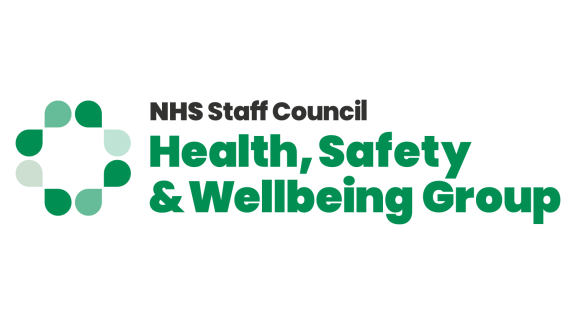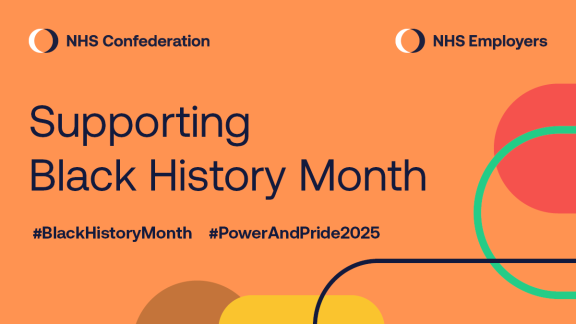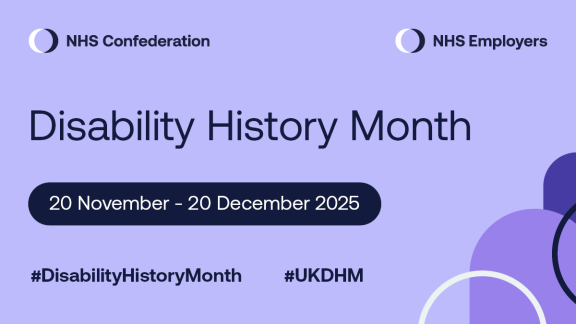Improving the personal safety of lone workers

The NHS Staff Council's Health, Safety and Wellbeing Group (HSWG) guide was developed through partnership working between unions, management and specialist advisors.
HSWG recognises that partnership working ensures best outcomes for patients and staff in protecting their health, safety and wellbeing, and wishes to ensure this guidance is implemented with the same partnership approach
This guide to improving safety of lone workers includes a list of key things to consider, which acts as a helpful checklist for those who work alone.
What do we mean by lone working?
Lone working can be defined as any situation, or location, in which someone works without close or direct supervision; without a colleague nearby or is out of sight or earshot of another colleague. Even staff who work in a building with others may be considered lone workers. Home workers are also considered lone workers. Lone workers face a variety of hazards. This guidance focusses on the risk of physical and verbal abuse and harassment.
An increasing number of health and social care staff work alone in community settings such as patients’ homes or on outreach work. Lone workers can be vulnerable and at increased risk of physical or verbal abuse and harassment from patients, clients, their relatives, or members of the public, simply because they don’t have the immediate support of colleagues or security staff.
Employers have a duty to protect lone workers by reducing the risks of physical and verbal abuse, so far as is practical to do so. Staff can also take many practical steps to help improve their personal safety while working out and about.
What your employer should do
Your employer has overall responsibility for ensuring your health and safety when you are at work, so far as is practical to do so. This includes compliance with several legal duties.
Risk assessment
Your employer has a legal duty to carry out suitable and sufficient risk assessments of any work-related activities that present a risk to your health, and/or personal safety when you are at work. This risk assessment should identify who might be harmed, the dangers they face and the practical measures that can be taken to prevent and reduce the risk of injury occurring. This assessment should be carried out in consultation with trade union health and safety reps, and take into account the job you are doing, the environment in which you will be working, the patients you will be dealing with, for example do they have a record of violence, and any other factors specific to yourself such as training and competencies.
Prevention
When looking at ways of reducing the risk, your employer should firstly look at ways of eliminating the hazard. For example, if the risk is caused or increased by you visiting a patient in their own home, it may be safer if the patient comes to you and is treated in a safe and secure environment. Alternatively, it may be safer if you are accompanied by a colleague on your visit.
Inevitably there may be circumstances when you regularly visit patients on your own. If this is the case, your employer must invest in implementing a safe system of work that deals with the risks to lone workers, including a means of discreetly raising the alarm, known as a lone worker safety device. However, it is important that this technology is supported by robust reporting systems that includes colleagues knowing where you are, and points of contact should you get in trouble.
Policy
Every organisation needs a policy to inform lone workers about the arrangements that are in place to protect employees when they are working alone. The policy should clarify roles and responsibilities, including the identification of those responsible for the effective implementation of identified control measures. In addition to covering preventative measures, the policy should also state the actions that will be taken following incidents. The policy should be communicated to all lone working staff and anyone else who has a part to play, for example at inductions or team meetings. It is important to check that the policy is understood.
Training
As part of the risk assessment process, your employer has a duty to identify your training needs. While training alone will not reduce the incidence of violence, it’s an essential part of an organisation’s approach to managing violence and aggression.
Support
Your employer should have systems in place to support individuals following a ‘near miss’ or an incident of violence or aggression, including verbal and/or physical assaults. This could include line management support, such as investigating the incident and putting measures in place to prevent it happening again, advising how to access counselling support, and liaising with the police, for example, reporting incidents and potential prosecution cases. Your manager should also support you if you have had to withdraw from a dangerous situation.
The role of line managers
Line managers play a key role in ensuring that policies, procedures, and risk assessments are implemented locally and are understood. Some of the other key roles of managers include:
Sharing information
Where there has been a ‘near miss’ or an incident involving a team member, it is essential that the information is shared at the earliest opportunity with other team members, agencies and colleagues who may be visiting the individual concerned or going into an otherwise risky environment.
Training and supervision
Line managers should ensure that staff are able to attend any training related to the management of violence and aggression, including conflict resolution, personal safety and the use of lone-worker devices in working hours. Managers should also ensure that staff have the relevant skills and competencies to be able to work alone safely. Managers also need to agree with staff the best ways to support them through the provision of appropriate supervision. This will depend on the risk level and their individual capability. In general, the higher the level of risk and less experienced they are, the greater need for supervision. If your member of staff is a new worker or are working in a new situation, they may need to be accompanied at the start.
Support
The support of line managers is essential. If staff feel in serious or imminent danger when working alone, their manager should support any decision they make to withdraw from the situation to a place of safety. Managers should also provide staff with support following an incident or near miss, allowing the member of staff sufficient time to attend counselling if required and follow up and act on incident reports.
Actions employees need to take
With good employer and line management support, your job should be much safer. There are still a few things that you can do to protect your own safety and that of your colleagues. Remember that you have a legal duty to take reasonable care of your own safety and the safety of others who may be affected by what you do – or fail to do.
Report incidents
Incidents and ‘near misses’ provide details about violent individuals, unsafe environments and other important information on the risks faced. You can help your manager and your Trust take steps to identify and address these risks to you and your colleagues by reporting all incidents and near misses.
Attend training
Make sure you attend any training provided by your employer to help you in lone working situations.
Policy and procedures
Make sure you understand and follow the local procedures put in place to protect your safety and the safety of others. This includes guidance on the use of your lone worker protection device.
Assess the risks to your personal safety
When you are going to be working alone, you should assess any immediate and unfolding risks to your personal safety. This is called dynamic risk assessment. If you feel in serious or imminent danger, you should withdraw, as soon as possible, to a place of safety.
Make use of your lone worker device
There is now a wide range of technology that can support lone workers as they go about their work. Some devices are integrated into mobile phones, and some are stand-alone units, such as SIM cards within ID badge holders. If you are supplied with a lone worker device, make sure you know how to use it, and that it is well maintained, charged, and is carried with you in line with local procedures.
Things to think about
If you have any concerns about your personal safety, contact your line manager or your local trade union representative. Your trade union safety representative should be consulted on the development of lone worker policies, risk assessments, training and the implementation of any lone worker devices.
- Have you received up-to-date training in the prevention and management of violence (for example conflict resolution and personal safety for lone workers)?
- Are you aware of your employers’ policies and local procedures relating to lone working?
- As far as you are aware, have you been given all the information about the risks of aggressive and violent behaviour by patients/service users and the appropriate measures for controlling these risks?
- Do you have readily available access to appropriate safety equipment (for example lone worker alarm devices)?
- Do you know and understand how to use and maintain lone worker safety equipment?
- Do you know how to report an incident or near miss?
- Do you understand the importance of proper planning before a visit and the need to be aware of the risks and do everything you can in advance to ensure your own safety?
- Do you always leave an up-to-date itinerary with your line manager and/or your colleagues?
- Do you keep in regular contact with your base when working alone?
- Do you carry out dynamic risk assessments during your visits?
- Are you aware that you should never put yourself or colleagues in danger and that, if you feel threatened or unsafe that you should withdraw immediately?
- Do you understand the circumstances under which a visit can be terminated?
- Do you know and understand your own responsibilities in ensuring you work alone safely as well as your manager?
Further reading and resources
- Croner-I: Lone working in a laboratory
- Health and Safety Executive: Lone workers - these pages offer advice aimed at lone workers themselves. A lone workers video is also available, setting out the key advice.
- Health and Safety Executive: Protecting lone workers - How to manage the risks of working alone - this leaflet is free to download. It is for anyone who employs lone workers, or engages them as contractors etc., including self-employed people or those who work alone.
- NHS England (NHSE): Violence prevention and reduction standard
- Royal College of Nursing: Keeping safe when working alone
- You are not alone - A UNISON guide to lone working in the health service
- Working alone - A UNISON health and safety guide on lone working for safety representatives
- Suzy Lamplugh Trust
Find further HSWG resources to support you in your organisation.



